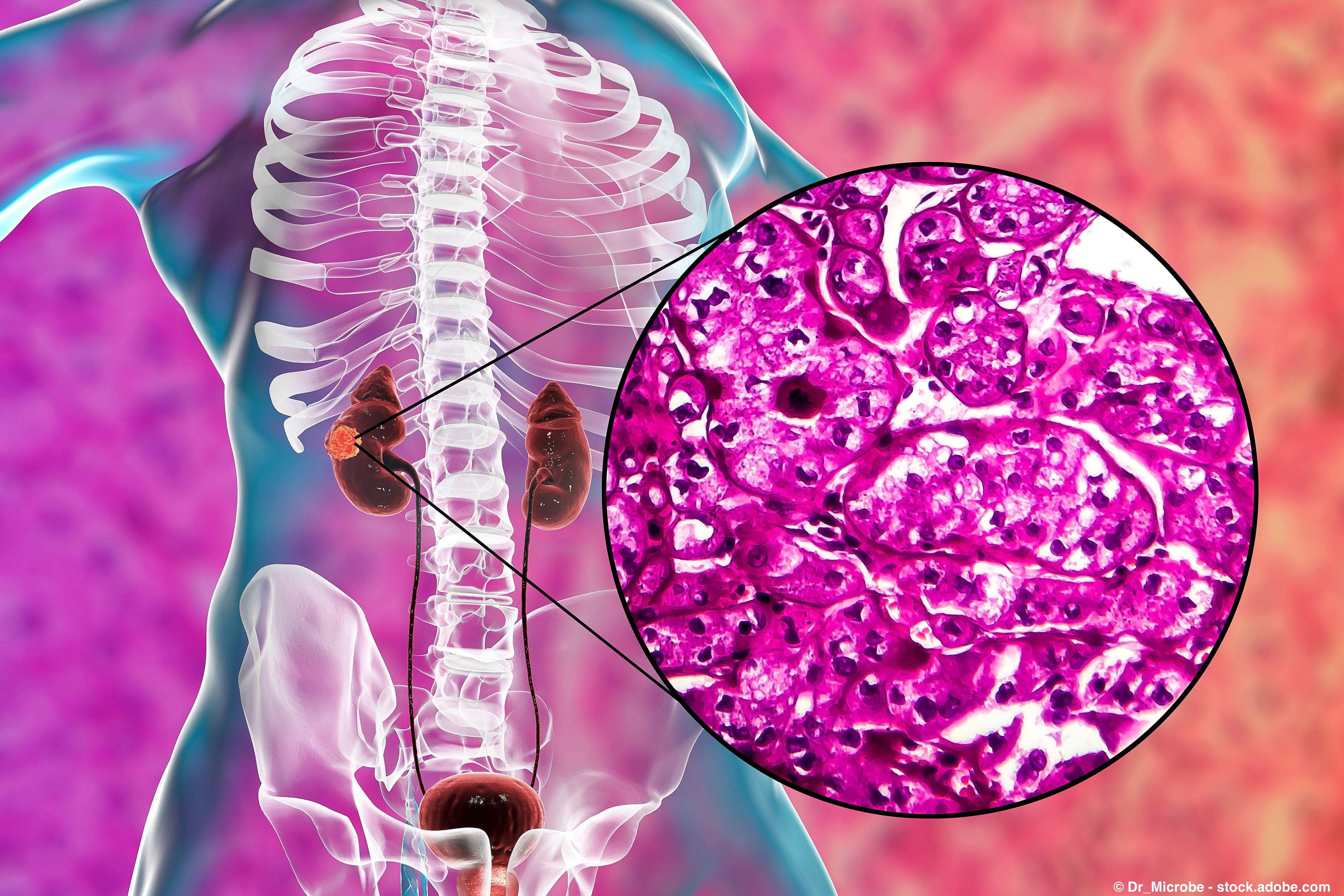Partial nephrectomy (PN) demonstrated similar overall survival and cancer-specific survival in patients with cT1a renal cell carcinoma (RCC) compared with radiofrequency ablation (RFA) in tumor size of 2 centimeters (cm) or less; however, RFA could be offered for elderly patients with comorbidity, researchers have stated.
In addition, for patients with tumor sizes greater than 2 cm, RFA is not recommended and further randomized controlled trials are further required to validate the trials results, according to study findings published in Medicine.
After a median follow-up for RFA was 45.5 months, and 55 months for PN, in the overall cohort, patients treated with PN were 54% less likely to die from any cause and 59% less likely to die from cancer-specific causes compared to those treated with RFA.
For tumors 2 centimeters or smaller, the risk of death from any cause and from cancer-specific causes was similar between the two treatments.
Glossary:
Overall survival: time from diagnosis to death from any cause.
Cancer-specific survival: time from diagnosis to death specifically from cancer.
Partial nephrectomy: surgery to remove part of the kidney with a tumor.
Radiofrequency ablation: a procedure that uses heat to destroy cancer cells.
Among patients with tumors measuring 2 to 3 centimeters, those treated with PN were 54% less likely to die from any cause, although the likelihood of cancer-specific death was not significantly different. For tumors larger than 3 centimeters, patients undergoing PN were 68% less likely to die from any cause and 77% less likely to die from cancer-specific causes compared with those treated with RFA.
A total of 15,692 patients were enrolled in this retrospective analysis, of which 15,392 underwent PN and 300 underwent RFA.
During a sensitivity analysis, patients who underwent PN had a 54% lower risk of death from any cause and similar cancer-specific survival compared to others, after adjusting for factors such as ethnicity, gender, year of diagnosis, age, laterality, grade, histology, marital status and tumor size.
“In spite of several limitations, this is the first study that compared the PN and RFA for T1a RCC stratified by tumor sizes. And our results could provide suggestions for the treatment of T1a RCC,” study authors wrote.
In a subset analysis, for tumors 2 cm or smaller, RFA was equally effective as PN in terms of overall survival and cancer-specific survival. Among tumors 2 to 3 cm in size, PN was associated with a 48% lower risk of death from any cause compared to RFA, while both treatments provided similar cancer-specific survival.
For tumors larger than 3 cm, PN was more effective, reducing the risk of death from any cause by 73% and lowering the risk of cancer-specific death by 62% compared to RFA.
Patients diagnosed with RCC through positive histology who underwent PN or RFA were included in the study. Tumor size was limited to 4 cm or smaller, which corresponds to the cT1a stage in the TNM cancer staging system, indicating a localized tumor confined to the kidney without spread to lymph nodes or distant organs.
Patients younger than 18 at the time of diagnosis were excluded, as were those with metastatic disease. Additionally, patients with unknown tumor grades, which could affect clinical outcomes, were excluded from the analysis.
“As far as we know, this is the first study that compared PN with RFA for cT1a RCC stratified by tumor sizes,” study authors wrote.
In the entire population, patients who underwent PN were younger than those treated with RFA and more likely to be married. Additionally, patients who underwent RFA were more likely to have a lower tumor grade.
The main focus of this study was overall survival defined as the interval between initial diagnosis and all-cause deaths. and cancer-specific survival defined as the time between initial diagnosis and death associated with RCC.
Reference:
“Partial nephrectomy versus radiofrequency ablation in patients with cT1a renal cell carcinoma A surveillance, epidemiology, end results (SEER) analysis” by Dr. Bo Yang, et al., Medicine.
For more news on cancer updates, research and education, don’t forget to subscribe to CURE®’s newsletters here.





